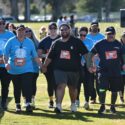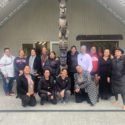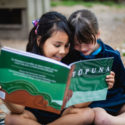A desire to explore taonga tuku iho – cultural property that is valued and handed down for the benefit of others – took Moerangi Falaoa-Rakaupai (Niue, Tūwharetoa, Maniapoto and Raukawa heritage) and Kim Eriksen-Downs (Ngāti Tūwharetoa, Mokai Patea, Ngāti Kahungunu, Ngāti Awa) on separate journeys of academic excellence. Both of their journeys honour those who have gone before, and benefit those who come after.
The exploration of taonga tuku iho started in response to pivotal events in their respective lives. It led to both wāhine gaining He Waka Hiringa (Master of Applied Indigenous Knowledge) through Te Wānanga o Aotearoa.
Moerangi Falaoa-Rakaupai focused on whakapapa in her taonga tuku iho
Moerangi is recognised by her hapū, Ngāti Te Maunga, as a holder of whakapapa, and someone able to share it with her hapū. Her love of whakapapa began as a young girl listening from the cosy warmth of her grandparents’ house to stories told by her koro and kui, her parents, uncles and aunts. She came to treasure the humour and adventure of the stories, as well as how they memorialised her tūpuna.
“Stories remember when people forget.”
She says this quote illustrates the importance of the stories that have been handed down. They hold within them the codes that unlock our ‘tūpuna mind,’ reminding us of who we are and where we belong.
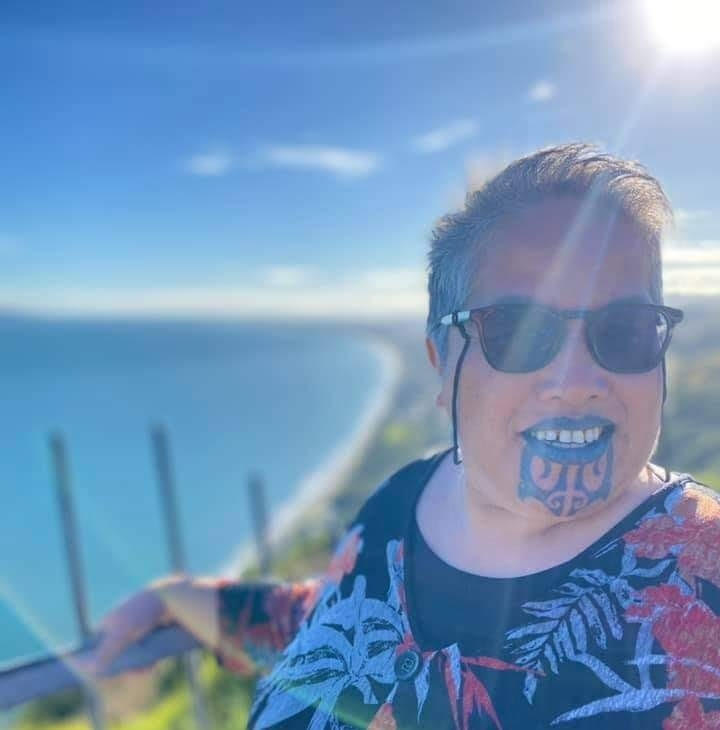
Kōrero tuku iho (stories), whakapapa (genealogy), and whenua (land) are the focus of the taonga tuku iho she developed as part of her post-graduate studies.
“What I wanted to do is to write a book for my hapū that would talk about the kōrero tuku iho – the stories that have been handed down from generation to generation. I wanted to put together whakapapa tables right from the beginning to today,” she says.
This was important to Moerangi, as her own hapū – alongside Māori across Aotearoa – had been affected by years of colonisation, assimilation and urbanisation.
“I did not want my mokopuna and my uri (descendants) to look around and see strangers on their lands. My job – and it’s the job of every generation, and we’re taught right from a young age – is we must keep our lands intact.”
Untangling the kōrero and artefacts that Moerangi received from various sources was challenging. She had to make sure that all of the kōrero in relation to whakapapa and whenua were tika, or correct. “Where colonised thinking was involved, I had to rout that out,” she says.
Kim Eriksen-Downs – Kaituruki Ora
Kim left school in the fourth form, and didn’t believe in her wildest dreams that she would ever complete post-graduate study. Certainly not at the level of He Waka Hiringa. Overcoming adversity in life equipped Kim to support others in Tūwharetoa to navigate their own obstacles. In the process, she developed considerable knowledge and skills as a wellbeing practitioner. Over 10 years, her mahi alongside her husband, Brendan Eriksen-Downs, and others in Te Kakano Consultants, produced several kaupapa which support wellbeing through the transformation of all forms of violation for Māori whānau.
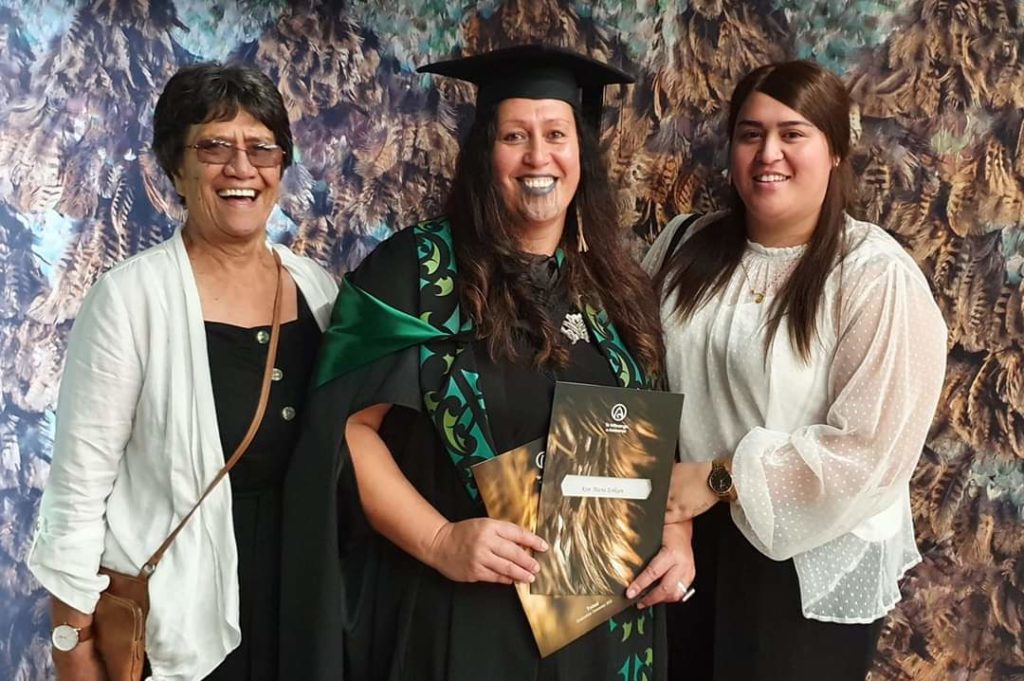
“It is our belief if we provide spaces where people’s voices are genuinely heard, with appropriate supports to maintains and sustain their vision, we can achieve anything.”
After experiencing a life-threatening medical emergency, Kim appreciated that keeping the knowledge related to the whakapapa of her mahi inside herself was irresponsible. She knew she had to get it out, for other people’s benefit. She felt compelled to leave behind her a better platform for healing, including of people’s indigenous identities, than had been available to her.
This awareness set Kim on her path to post-graduate study, and the eventual blossoming of Te Hāpori Ora, her toanga tuku iho.
“My Master’s was a way I could bring it all together in some succinct way and honour the whakapapa of our journey. That was my gift to give back to the community of people that we have walked alongside of. I had to find a way to acknowledge their journey.”
Studying offered Kim the chance to reflect on her own personal journey, and to honour her growth as a Kaituruki Ora, the name she has given her indigenous practice of walking alongside others in their journey of self-discovery and healing, without imposing herself on them. “It was about me re-indigenising myself, and reclaiming and repatriating myself back to my own whānau, hapū and iwi tikanga, which some people call models of practice,” she says.
Studying also offered Kim the chance to set an example of success. “I wanted to show my descendants that you can do anything. There is no barrier to academia, there is no barrier to achieving in life, and I wanted to show them that you can do anything,” she says.
Kim is grateful for the support which made it possible to complete her studies, including from a Henry Rongomau Bennett Scholarship. Her thanks go also to the kaiako of Te Wānanaga o Aotearoa who were there for her every step of the way, to those she has walked alongside of in her mahi, including the Manurere whānau (those who have taken flight from the lead of Te Kakano Consultants), and also to E Tū Whānau.
“It wouldn’t have happened without E Tū Whānau, to be honest because they gave us the opportunity to do more of what we love, which is wānanga and developing kahukura.”
Want to know more?
Read about E Tū Whānau kaupapa, vision, and Mahere Rautaki (Framework for Change) 2019 – 2023
Sign the E Tū Whānau Charter of Commitment
Join the E Tū Whānau communities on Facebook, Instagram and YouTube

